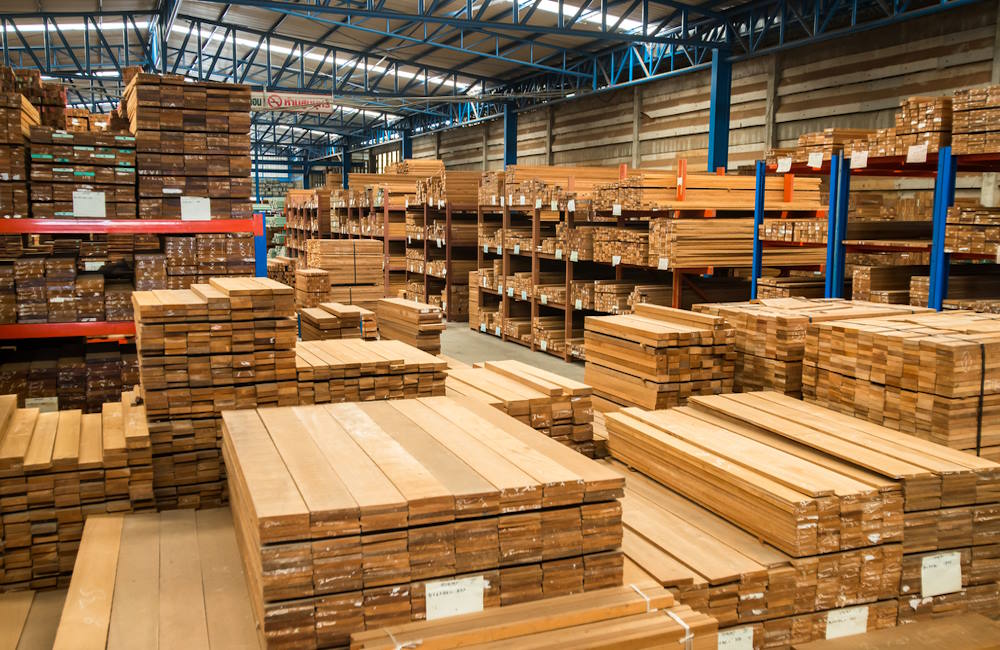Lumber Futures Outlook: Navigating the Current Market
Share This Story, Choose Your Platform!
The lumber industry continues to navigate through turbulent waters since the dramatic plunge in lumber prices from their peak in May 2021. Now, as we move toward the end of 2023, market dynamics present a new picture, reflecting the complexities of the housing market, economic conditions, and industry responses. Our latest lumber futures forecast examines the critical elements at play as stakeholders look for signs of stability and growth opportunities.
Industry experts keep a close eye on lumber futures as a bellwether for broader economic trends, especially in the construction and housing sectors. With two-thirds of United States lumber consumption tied to home building and remodeling, understanding the trajectory of lumber futures is essential for a swath of the U.S. economy.
Recent Data and Market Movements for Lumber Futures
As of October 2023, lumber prices have seen volatility with a rally to almost $600 in mid-July and a drop to $480. However, since Sept. 1, futures have stayed within a $30 range and hovered around $500. This figure represents a successful projection since our last report. Wildfires in Canada have significantly shaped the current landscape, along with the Fed’s interest rate pause and energy costs rising. They signal a positive outlook for the near future.
Housing Market and Economic Indicators
The latest housing forecasts from Fannie Mae indicate existing home sales continue to fall since our last update to a seasonally adjusted 3.96 million, but housing starts have experienced growth up 12% to a seasonally adjusted -11.7% YoY for 2023. Lumber futures are particularly interested in housing starts. As of our last update, Fannie Mae projected a recession in 2023 but has since pushed that back to 2024 with estimated mortgage rates at over 7% expected to stay that way.
The Fed’s ongoing strategies regarding interest rates remain a focal point, with rates sitting at 5.5% as of Nov. 5, 2023. This figure is critical because it directly affects the affordability of new homes and, consequently, the demand for lumber. Many experts see the Fed as potentially done with interest rate hikes and continuing a holding pattern, which will bring back buyers to the bond market, bringing down borrowing rates.
Lumber Mills’ Response to Market Conditions
The lumber mills’ balancing act between production and demand plays a pivotal role in futures prices. In 2023, sawmills increased output in the second half of the year in response to increased U.S. demand, mainly from the jump in housing starts. These decisions are pivotal in determining the availability of lumber and its price on the market. Massive investments in Canada and U.S. sawmills will not only increase overall production but result in more efficiency. This is a much-needed relief to combat higher wages and transportation costs, specifically with log haulers.
Lumber Futures Forecast and Strategies
Given the current market conditions, with lumber futures prices at just over $500, it seems prudent to adopt a wait-and-see approach. Seasonally, the winter months typically introduce the low to the market, which traders and industry stakeholders should consider.
In conclusion, while the lumber market has faced considerable volatility, the underlying fundamentals suggest a more normalized lumber price forecast such as those seen before COVID-19, based on current data and trends.
For traders and industry professionals, keeping abreast of the latest economic indicators, production adjustments, and housing market trends is crucial in forecasting lumber futures. As always, we recommend a strategy that accounts for the inherent uncertainties of the market while capitalizing on data-driven insights.
Share This Story, Choose Your Platform!
Lumber Futures Outlook: Navigating the Current Market
Share This Story, Choose Your Platform
The lumber industry continues to navigate through turbulent waters since the dramatic plunge in lumber prices from their peak in May 2021. Now, as we move toward the end of 2023, market dynamics present a new picture, reflecting the complexities of the housing market, economic conditions, and industry responses. Our latest lumber futures forecast examines the critical elements at play as stakeholders look for signs of stability and growth opportunities.
Industry experts keep a close eye on lumber futures as a bellwether for broader economic trends, especially in the construction and housing sectors. With two-thirds of United States lumber consumption tied to home building and remodeling, understanding the trajectory of lumber futures is essential for a swath of the U.S. economy.
Recent Data and Market Movements for Lumber Futures
As of October 2023, lumber prices have seen volatility with a rally to almost $600 in mid-July and a drop to $480. However, since Sept. 1, futures have stayed within a $30 range and hovered around $500. This figure represents a successful projection since our last report. Wildfires in Canada have significantly shaped the current landscape, along with the Fed’s interest rate pause and energy costs rising. They signal a positive outlook for the near future.
Housing Market and Economic Indicators
The latest housing forecasts from Fannie Mae indicate existing home sales continue to fall since our last update to a seasonally adjusted 3.96 million, but housing starts have experienced growth up 12% to a seasonally adjusted -11.7% YoY for 2023. Lumber futures are particularly interested in housing starts. As of our last update, Fannie Mae projected a recession in 2023 but has since pushed that back to 2024 with estimated mortgage rates at over 7% expected to stay that way.
The Fed’s ongoing strategies regarding interest rates remain a focal point, with rates sitting at 5.5% as of Nov. 5, 2023. This figure is critical because it directly affects the affordability of new homes and, consequently, the demand for lumber. Many experts see the Fed as potentially done with interest rate hikes and continuing a holding pattern, which will bring back buyers to the bond market, bringing down borrowing rates.
Lumber Mills’ Response to Market Conditions
The lumber mills’ balancing act between production and demand plays a pivotal role in futures prices. In 2023, sawmills increased output in the second half of the year in response to increased U.S. demand, mainly from the jump in housing starts. These decisions are pivotal in determining the availability of lumber and its price on the market. Massive investments in Canada and U.S. sawmills will not only increase overall production but result in more efficiency. This is a much-needed relief to combat higher wages and transportation costs, specifically with log haulers.
Lumber Futures Forecast and Strategies
Given the current market conditions, with lumber futures prices at just over $500, it seems prudent to adopt a wait-and-see approach. Seasonally, the winter months typically introduce the low to the market, which traders and industry stakeholders should consider.
In conclusion, while the lumber market has faced considerable volatility, the underlying fundamentals suggest a more normalized lumber price forecast such as those seen before COVID-19, based on current data and trends.
For traders and industry professionals, keeping abreast of the latest economic indicators, production adjustments, and housing market trends is crucial in forecasting lumber futures. As always, we recommend a strategy that accounts for the inherent uncertainties of the market while capitalizing on data-driven insights.
Share This Story, Choose Your Platform!
Lumber Futures Outlook: Navigating the Current Market
Share This Story, Choose Your Platform
The lumber industry continues to navigate through turbulent waters since the dramatic plunge in lumber prices from their peak in May 2021. Now, as we move toward the end of 2023, market dynamics present a new picture, reflecting the complexities of the housing market, economic conditions, and industry responses. Our latest lumber futures forecast examines the critical elements at play as stakeholders look for signs of stability and growth opportunities.
Industry experts keep a close eye on lumber futures as a bellwether for broader economic trends, especially in the construction and housing sectors. With two-thirds of United States lumber consumption tied to home building and remodeling, understanding the trajectory of lumber futures is essential for a swath of the U.S. economy.
Recent Data and Market Movements for Lumber Futures
As of October 2023, lumber prices have seen volatility with a rally to almost $600 in mid-July and a drop to $480. However, since Sept. 1, futures have stayed within a $30 range and hovered around $500. This figure represents a successful projection since our last report. Wildfires in Canada have significantly shaped the current landscape, along with the Fed’s interest rate pause and energy costs rising. They signal a positive outlook for the near future.
Housing Market and Economic Indicators
The latest housing forecasts from Fannie Mae indicate existing home sales continue to fall since our last update to a seasonally adjusted 3.96 million, but housing starts have experienced growth up 12% to a seasonally adjusted -11.7% YoY for 2023. Lumber futures are particularly interested in housing starts. As of our last update, Fannie Mae projected a recession in 2023 but has since pushed that back to 2024 with estimated mortgage rates at over 7% expected to stay that way.
The Fed’s ongoing strategies regarding interest rates remain a focal point, with rates sitting at 5.5% as of Nov. 5, 2023. This figure is critical because it directly affects the affordability of new homes and, consequently, the demand for lumber. Many experts see the Fed as potentially done with interest rate hikes and continuing a holding pattern, which will bring back buyers to the bond market, bringing down borrowing rates.
Lumber Mills’ Response to Market Conditions
The lumber mills’ balancing act between production and demand plays a pivotal role in futures prices. In 2023, sawmills increased output in the second half of the year in response to increased U.S. demand, mainly from the jump in housing starts. These decisions are pivotal in determining the availability of lumber and its price on the market. Massive investments in Canada and U.S. sawmills will not only increase overall production but result in more efficiency. This is a much-needed relief to combat higher wages and transportation costs, specifically with log haulers.
Lumber Futures Forecast and Strategies
Given the current market conditions, with lumber futures prices at just over $500, it seems prudent to adopt a wait-and-see approach. Seasonally, the winter months typically introduce the low to the market, which traders and industry stakeholders should consider.
In conclusion, while the lumber market has faced considerable volatility, the underlying fundamentals suggest a more normalized lumber price forecast such as those seen before COVID-19, based on current data and trends.
For traders and industry professionals, keeping abreast of the latest economic indicators, production adjustments, and housing market trends is crucial in forecasting lumber futures. As always, we recommend a strategy that accounts for the inherent uncertainties of the market while capitalizing on data-driven insights.






